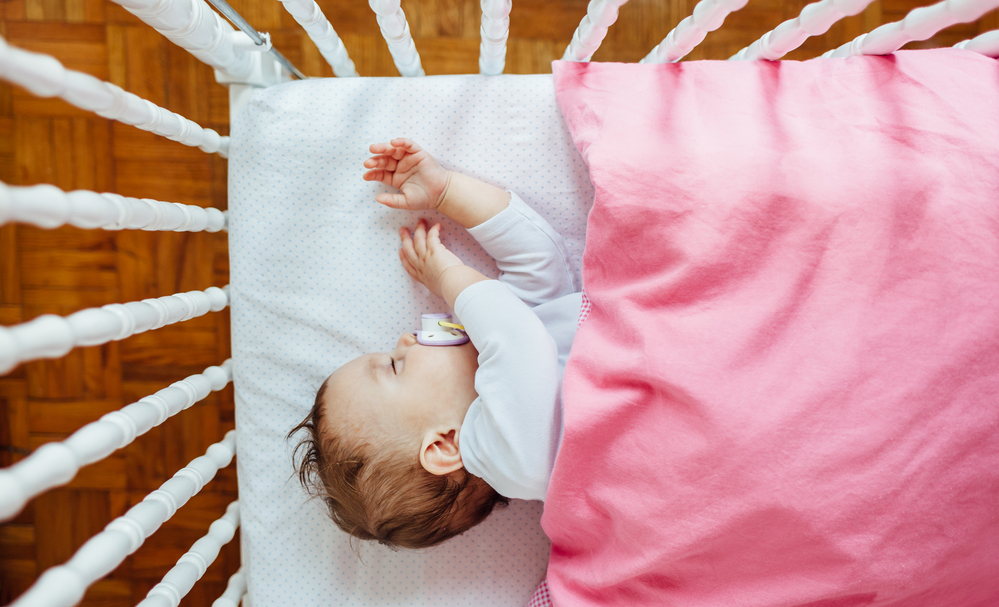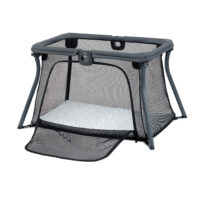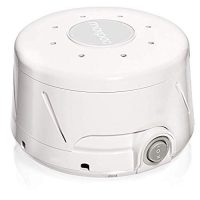Sleep is surprisingly stressful for a parent. Making sure your baby gets the right amount of sleep in the right place is one of the toughest jobs that us parents manage.
Getting baby to sleep in their own crib is no easy feat, either. And not all babies are miraculously great sleepers.
If you’re wondering how to get baby to sleep in the crib, I’ve got seven years and three kids worth of parenting experience, plus some amazing research skills that I’ve used to bring you the best tips for transitioning your baby to their crib.
How To Get Your Baby to Sleep in a Crib
1. Consistency
A lot of other places might put this tip last, to sum things up. But I think inconsistency is the NUMBER ONE thing that can thwart your efforts to get baby to sleep in their crib.
You can do everything else perfectly, and if you don’t do it consistently, it will not work.
For example, with my first baby, I chose to be very strict on his sleeping schedule and patterns. In return, I got a baby who loves to sleep and still sleeps solid as a school-age kid today. For my third child, we were so busy and trying to balance so many different schedules that we never got strict with his sleep schedule or patterns. As a result, it took me so much longer to get him to transition to his crib.
Your best bet is to pick a plan and stick to it. Don’t try the gentle sleep training method for three nights, and then it doesn’t work, so then you try to let him cry it out for one night, but then you feel bad, so you try to co-sleep. Switching around isn’t going to do them or you any favors. Research, study, and figure out which sleep method you want to go with. Then do it and do it consistently.
Good sleep is like any other habit – it takes time and dedication to accomplish.
Now, I know that the perfect day just doesn’t exist when you have kids. Sometimes doctors’ appointments or other things get in the way of your schedule.
But, the bonus here is that babies can’t actually tell time. So if you can have baby take a nap every single morning at 9 AM then again at noon exactly, then again at 3 PM exactly, then again at 5 PM, and still have them go to bed at exactly 8:30 PM, then, by all means, do that!
But, if you can’t stick to the clock, you may still be able to sustain the same pattern. If you consistently have a pattern, whether that’s the classic “wake/eat/play/sleep” that a lot of sleep training proponents use, or just another pattern that works for you, that consistency in the schedule will help your baby realize when it’s time to sleep, which is the first step to getting them to sleep in their crib.
I can’t stress enough how important consistency is, and I also can’t stress enough how difficult this one is to maintain. But it’s so worth it!
2. Get Them Tired!
You sleep better when you are physically and mentally tired, don’t you? Well, so does baby!
Stimulating your baby both mentally and physically throughout the day will not only give you a great chance to bond with them, but it will give their body the signal that they need to get some sleep in order to let their brain grow.
When baby is very young, this is much harder to accomplish. But as they grow older, it gets increasingly easier to simply go for a walk outside and get them fresh air and let them see the sights, or lay them in your lap as you play pattycake and peekaboo for a few minutes. Then, as baby works on their mobility, you can play fun games like “chase baby down the hallway 10 times” or just play with a toy that they love to interact with.
The most tiring exercises will be those that are a combination of actual physical movement and mental stimulation. All three of my kids loved bouncers and play mats for this reason. They got to move around while exploring their environment and earning lots of clapping and “yays!” from mommy and daddy.
Be careful here not to get baby too tired, though. I know, that sounds silly. But we want them to be pleasantly fatigued, not exhausted. Exhausted babies don’t sleep well, which is probably something you’ve discovered as nap after nap in the crib has been thwarted and you’ve been left with a cranky and tired baby.
So, your goal is to get the extra energy out through play, then switch to quiet and calm play to start the transition to sleepytime.
3. Sounds and Swaddles
There are two secret weapons at your disposal when you’re trying to get your baby to sleep in the crib by themselves.
The first is white noise or gentle sounds. Think about it: your baby is used to being in the womb, where they had the constant noises of your blood wooshing around and the placenta and fluid gurgling, plus all the external noises they got exposed to. So when they come out of the womb and we place them in a crib alone where it is deathly quiet, they might not like it one bit. That’s why white noise is your best friend.
Now, you’ll have to play around a bit to see what kind of noise your baby likes best. Two of my kids really liked soft music in the background, whereas one kid only seemed to settle with nature sounds. All three of my kids loved the coolness and noise that a fan gave them while napping. You can purchase special sound machines for the nursery to help achieve this. You can also purchase a tabletop fan, a heater, a humidifier, or any small machine that will make a gentle whirring noise when turned on.
Once baby hears the reassuring and consistent background noise, that will also help drown out any other noises you have going on in the house, like traffic or older siblings, they should be drifting off to sleep in no time in their crib.
Now, remember how we just discussed babies’ womb environment? Well, another facet of that is the fact that they were constrained in the womb. Most babies don’t have space in the womb to stretch out. They are often in the fetal position and gently cradled by the uterus and your body. You can mimic that by swaddling your baby.
They make special swaddles for this task, or you can purchase a large swaddling blanket that you can wrap around your baby to help them feel more secure.
Besides helping baby feel like they’re in the womb, a swaddle will help illuminate the Moro reflex. This is a reaction that all babies are naturally born with. It startles them and makes them feel as if they are falling. That’s why your baby might appear to stretch out their arms and panic when you are laying them down or getting them dressed or doing other movements that involve making them generally uncomfortable.
Using a swaddle will help baby to enter and maintain a deeper level of sleep. This will result in more sleep for you and for them. The swaddle will help them to feel more secure, and the rest easier.
Now, the one downside of swaddles is that they can’t be used forever. Swaddles work best on newborns. Baby will benefit from a swaddle until they hit about five or six months old, at which case they will probably figure out how to get out of the swaddle. Once they do, it can become a hazard, as they could strangle or suffocate as they escape their swaddle.
4. Check Their Cues
Sometimes, us parents can get so wrapped up in our schedules and our to-do list that we forget to actually watch baby for sleep cues! As a Type-A parent that likes to achieve a lot on a tight schedule throughout the day, I am so guilty of this! But, it’s important to remember that when it comes to sleeping, no one can tell you more about when to go to sleep then baby themself.
Baby is much more likely to transition to their crib and sleep better if you put them to sleep when they are just tired enough and not too tired. Remember that we already mentioned that laying down a baby who is overly exhausted is going to be very tough.
If you are trying to get baby so tired and keep them awake for so long so that they will sleep better, you are missing the mark. At that point, many babies are so mentally and physically wound up that they just aren’t going to settle very well. It’s going to take them much longer to fall into the deep sleep stages that you want them in so that they can sleep in their crib.
Think about it – it’s like you running a marathon and then giving a really big presentation at work and then immediately trying to go lay down in your bed and go straight into a deep sleep. It’s not going to happen! You’ve sent cues to your body that it’s time to be up and thinking and moving and doing, and you can’t just immediately lay baby down and expect him to sleep when you do the same to them.
Watch your baby for signs that they are tired. When you see the following signs, it’s probably time to start settling baby down in their crib:
- Staring off into space
- Yawning
- Rubbing their eyes
- Keeping their eyes closed for longer than a second
- Light fussing
- Attempting to cuddle you
With this, know your own baby’s awake times. Some babies can be awake for three or four hours at a time before they get tired (like my energizer bunny child), while some kids can only handle 2 hours of awake time. There are sleep charts that help you gauge, but each kiddo will have a different personality and different sleep needs.
5. Make a Routine
Some of us are naturally prone to falling in a routine and for others, it just doesn’t happen. No matter where you are on the routine spectrum, now’s the time to get good at making a routine for your baby’s sleep.
If you are super type-A and organized and you run a tight ship, the clock might be the biggest dictator for your routine. But no matter if you start your sleeping routine at exactly 7pm or sometime between 6pm and 9pm, whenever baby starts giving those sleepy time cues, do the same thing every night.
Each baby will need a different bedtime routine. Check out this list of suggestions and find the pre-bedtime activities that will calm your child:
- Take a warm bath
- Massage lavender oil on the bottoms of the feet
- Nurse until baby is drowsy/asleep ( I could never figure out how to keep my kids awake!)
- Snuggle with a cozy blanket
- Read a bedtime book
- Listen to lullabies
- Go in a dark room
- Get that white noise going!
- Rock or walk around until calm and drowsy, but not asleep
- Put into a swing or bouncer to wind down
I know that cartoons can soothe your baby into a stupor, but just like we shouldn’t be exposed to that blue light right before bed, baby shouldn’t be getting those “hey, it’s time to be mentally active!” signals right before bed either. So stay away from bedtime screen time.
Once you know what gets baby tired, then create a routine for each and every night. For example, for all my kids, I have followed a general routine that looks like this:
- Eat dinner
- Take a warm bath
- Get massaged with lavender lotion
- Quiet and calm playtime until tired
- Go to a dark bedroom and turn on the fan and humidifier
- Get wrapped up in a cozy blanket
- Nurse to sleep
- Lay down in a crib
- BOOM! VICTORY!
Once your routine is established, it will work like a charm! It will help for naps as well, with just a few tweaks. For each nap time, I still follow steps 4 through 8. And it works really well!
6. Naps First, Night Later
When getting baby to sleep in their crib alone, it’s so tempting to just throw them in there one night and see how it goes. After all, that’s when we want and need our sleep most – nighttime. But for a baby that doesn’t like the crib, this can be a really bad plan. No matter how desperate you are, they aren’t going to suddenly get used to the crib because you decided to lay them in it for one night.
The best plan is to start transitioning to the crib during nap time first. If baby has been napping in a swing, bouncer, or most likely, your arms, then now is the time to start getting them used to that crib during their naps.
If baby takes multiple naps during the day, start by attempting one nap in the crib. Yes, baby will probably not like it for the first week. Or maybe even two weeks. But they will eventually see it as their sleep haven and they’ll start sleeping longer and longer stretches in the crib.
Once baby has succeeded in taking one nap in the crib, it’s time to move all their naps to the crib.
Then, once all naps in the crib are as seamless as they possibly can be, it’s time to move to nighttime in the crib.
Again, consistency is the best plan of attack here. Do the same nap and bedtime routine EACH and EVERY time. Darken the room, turn on the fan, snuggle and nurse, read a book, sing a sleepy time song, give them a back rub, or whatever it is that you do that signals to baby that it’s time to catch some zzz’s. And just like they associate those things with sleep, they’ll start to associate the crib space with sleep, too.
7. Get a Video Monitor
This seems like a silly, silly thing. I totally get it. But this part is for you, mom and/or dad. During naps and during nighttime, one of the biggest hindrances to baby’s sleep can be us parents. Whether we respond too soon when they cry at night, or miss the sleepytime cues and get them overtired, we can be the culprit for some of baby’s sleep issues.
A video monitor is a great way to give you peace of mind. You know how they say that some animals can smell fear? Well, I’m pretty sure that babies can sense our apprehension about them being in their cribs all alone and they act accordingly. But I can’t tell you how many times my video monitor saved me from myself.
There have been many times when baby was dreaming or fussing in their sleep and wasn’t ready to get up. The video monitor let me, ahem, monitor the situation and then I could let baby be until they really needed me.
This allows baby to not only go through sleep cycles on their own without the disruption of constant mommy check-ups, but it also teaches them to self soothe. Maybe baby will fuss for a minute, but left safely alone in their crib, they’ll either lay quietly, which is still good resting time, or they’ll go back to sleep. If you just barge in there at the first sound, you’ll never know if they are capable of self-soothing! And self-soothing is the thing that will allow them to sleep a whole night in their crib.
Sleep Summary
I hope you can take this advice and learn how to get baby to transition to a crib. It’s an amazing moment when baby sleeps for several uninterrupted hours in their crib and you get the rest and rejuvenation that you need.
If things don’t go well, just hang in there and keep trying. I’ve got a velcro baby myself (you know, the one that’s only happy if they are stuck to you) and it has taken some doing to get him on even a kinda-sorta sleep routine in his crib. He still has nights where he refuses and ends up co-sleeping, only to sleep for several hours in the crib in the next night.
You keep doing the right things and baby will sleep in their crib eventually! I promise!







